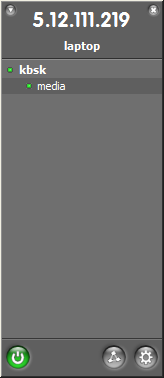Hamachi was the subject of discussion on Leo Laporte's December 15th "Security Now!" podcast with Steve Gibson. Steve Gibson is the owner and maintainer of the popular "Shields up!" web site. The two have been discussing encrypted communications for in the last few podcasts and the difficulties of setting up a simple VPN for home or small business use. Steve reviewed a new, free, VPN solution called Hamachi - and he likes what he sees. I likes what I see as well. Check it out.
Hamachi : Stay Connected: "With Hamachi you can organize two or more computers with an Internet connection into their own virtual network for direct secure communication."
Hamachi is a zero-configuration virtual private networking application with an open security architecture and NAT-to-NAT traversal capabilities.
I installed Himachi on two of my machines to test. Both machines are Windows XP Pro with SP2 and all the latest Microsoft updates. The installation was a breeze. When you launch Himachi for the first time you will be presented with a walk through system that help you configure the system.  This took me less than 5 minutes. Whoa! One of the machines I used for testing is a Dell Inspiron 2600 with a LinkSys WUSB12 wireless NIC. I temporarily "borrowed" a wireless connection from a neighbor and was successfully able to create a VPN connection back to my home network and access files on the second machine. I plan to create a VPN between my in-laws machines. Supporting them will be that much easier.
This took me less than 5 minutes. Whoa! One of the machines I used for testing is a Dell Inspiron 2600 with a LinkSys WUSB12 wireless NIC. I temporarily "borrowed" a wireless connection from a neighbor and was successfully able to create a VPN connection back to my home network and access files on the second machine. I plan to create a VPN between my in-laws machines. Supporting them will be that much easier.







